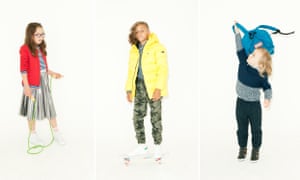
When I asked my eight-year-old child what he might want to wear to an anticipated wedding, his reaction was clear and quick: "A red suit with white spots, a coordinating cap and gold shoes." This appeared to be sufficiently reasonable to me. Who in their correct personality would not have any desire to wear such a remarkable outfit?
We set off for our neighborhood mall in high spirits. But then, inside a hour of hitting the high road, melancholy had set in. There is a remarkable sort of wretchedness to be found in an eight-to-14-year-old young men's garments area: endless supply of ooze green, dim and – my child's close to home enemy – naval force blue. He attempted on one revolting, Jacob Rees-Mogg-style overcoat after another. "It makes me resemble an agent," he stated, looking at the firm, awkward child in the mirror.
Men are not hereditarily customized to need to look dull. In numerous societies, they are as beautiful and captivating as ladies
In a whole morning, we found not one thing of attire that was fascinating, not one that communicated even the most diminutive particle of singularity or inventiveness. The nearest we came to progress was some burgundy pants – and, as my child called attention to, "They are simply not red." To make an already difficult situation even worse, every time we entered a shop, we needed to stroll through the young ladies' garments segment to get to the young men's – passing an uproar of sequins, frills, examples and prints. We discovered some fantastic gold shoes in Clarks, just to be told by a sales representative that they were for young ladies, and didn't arrive in a major enough size.
I totally comprehend guardians of young ladies protesting perpetual pink and princess dresses. Yet, maybe the circumstance is more awful for young men. In any event young ladies get a touch of decision. What does this abnormal absence of decent variety enlighten us concerning what we anticipate that young men will be? Exhausting, traditionalist, dull, commonsense – or more terrible. Gazing at the haunting columns of smaller than expected suits I was helped to remember Grayson Perry's book on sex, The Descent of Man, and specifically his concept of "default man", the prime example of the affluent, great and besuited white male. Perry – a man who knows some things about apparel – has a great deal to say in regards to suits. "The genuine capacity of the calm tailored suit isn't to look brilliant yet as cover," he composes. "A man in a dark suit is imperceptible."
This is the message high-road design is sending to young men: that they should point not to convey what needs be but rather to wear a sort of shroud of imperceptibility. Why? It's not just as men are hereditarily customized to need to look dull. In numerous societies, men's design is as brilliant and glitzy as women's: look at the Sapeurs in Congo-Brazzaville, or any African men's dress shop so far as that is concerned. On the other hand, return two or three centuries or so to when well off European men would have worn rich hues and textures, adornments and even high foot sole areas.
In his book The Psychology of Clothes, distributed in 1930, the clinician and design antiquarian JC Flugel investigated the socially upheld conventionality of men's attire. He noticed that in present day western culture, not at all like in most customary social orders, men dressed less beautifully than ladies. He dated this back to the finish of the eighteenth century, when there had been a significant move in the manner in which men introduced themselves, which Flugel called the "considerable manly renunciation". Getting some distance from wearing ostentatious garments to show their riches, men progressively received a uniform that reflected Enlightenment estimations of objectivity and common sense. (In doing as such, they were likewise separating themselves from ladies, who were as yet urged to be frilly, high-obeyed and silly.) Interestingly, Flugel thought about ladies' form to be mentally more beneficial, and he supported a change of men's apparel.
Considering the extreme moves in sexual orientation relations over the succeeding 200-odd years, it appears to be wonderful this is as yet the dynamic. We're continually being informed that men are ending up increasingly "metrosexual" – wearing sarongs, and purple glossy silk suits à la Beckham. All things considered, there's very little proof of that on the high road – not in John Lewis, M&S, Zara or H&M.
Luckily, we currently have different choices. After a resuscitating bun in the neighborhood bistro, my child and I went home and hit the web. Furthermore, there, perusers, we found our cheerful closure: an outfit so preposterous, so boisterous and senseless and wonderful, that there was basically no real way to stand up to.
Who knows to what extent my kid's promise to brilliant red will last – maybe in several years he will join the naval force blue group. In any case, I would like to think not. Life can be intense, and we as a whole need to discover euphoria where we can. It's not just young ladies who advantage from a pinch of excitement and marvelousness.

No comments:
Post a Comment